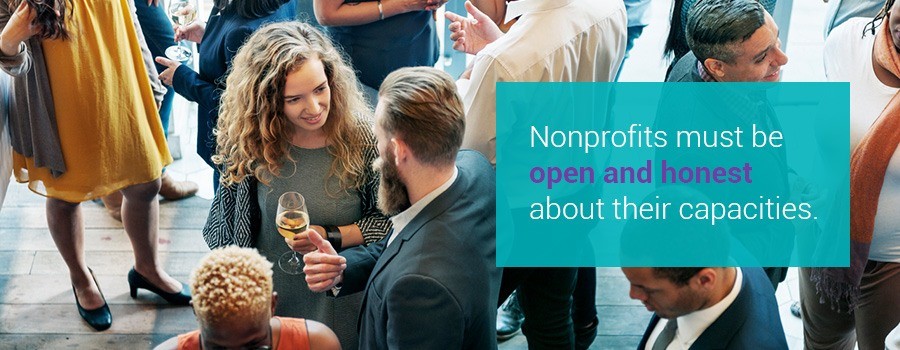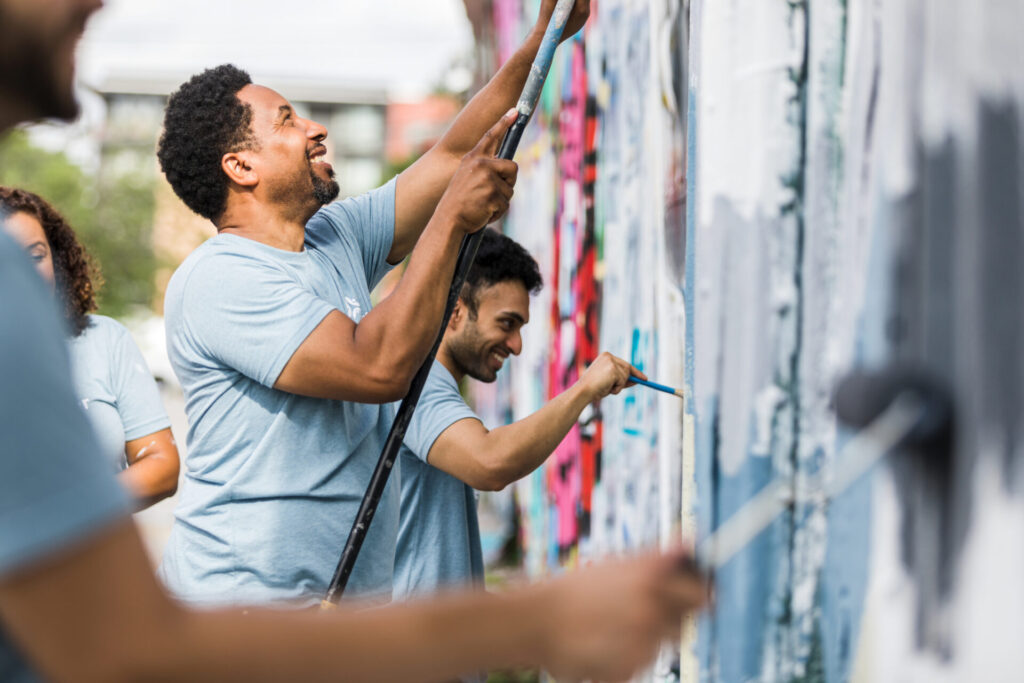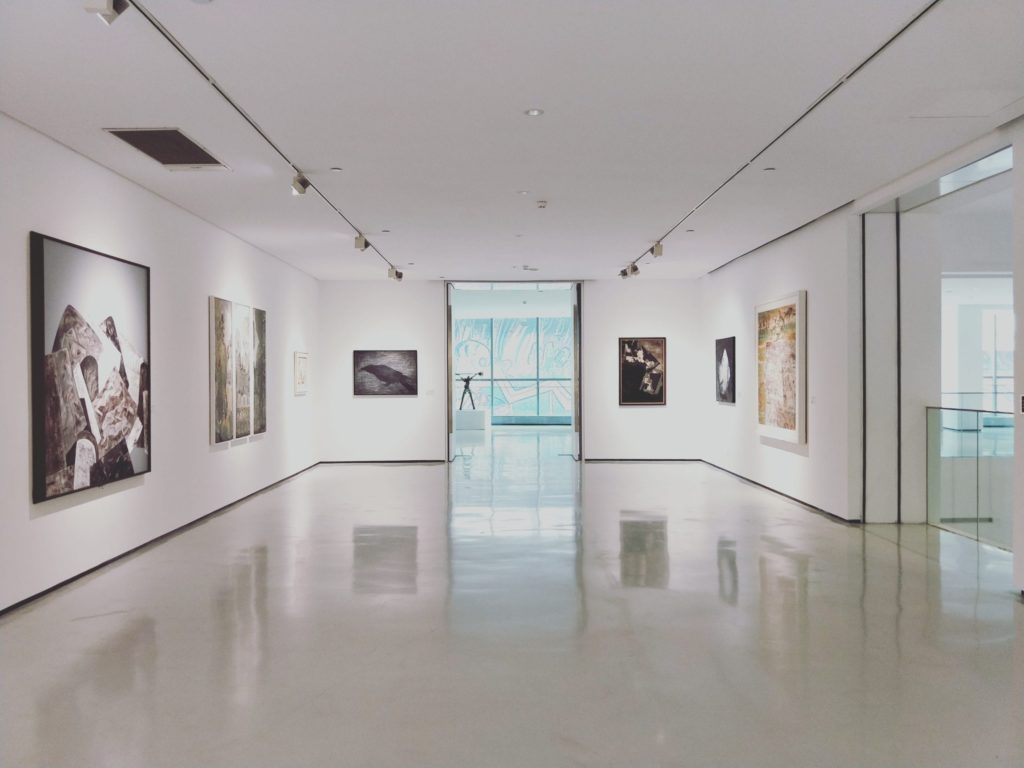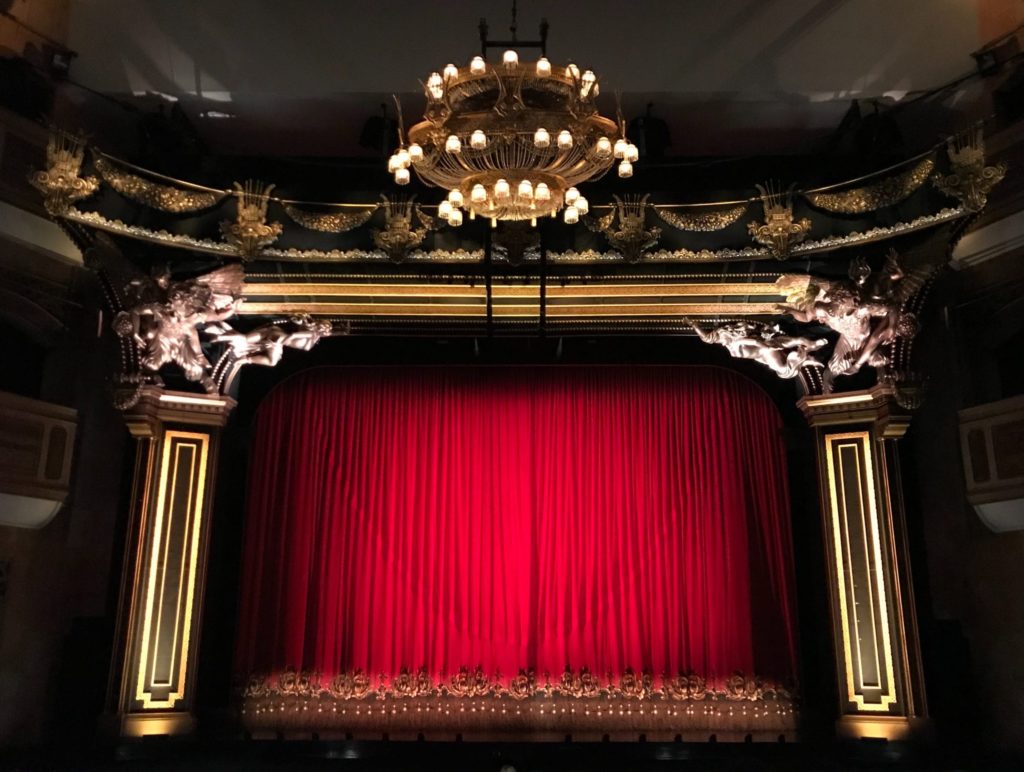Sep 20, 2019
Museum fundraising guide

Successful museum fundraising is at a crossroads. The emergence of mobile technology, evolving corporate philanthropic priorities, and shifting donor demographics call for new fundraising activities to maintain — or in some cases even increase — donor revenue. And while overall charitable giving is rising, many nonprofit museums still feel pinched to reach their philanthropic quotas. In short, the field needs fresh solutions.
This guide explores the museum fundraising process given this contemporary axis. Its ideas and insights are relevant to all levels of staff at your museum, but particularly those in the development, external affairs, and event management segments. Senior staffers, executive directors, and trustees will also find this guide relevant to their outreach responsibilities.
We hope the nonprofit tips, strategies, and event-planning objectives outlined here inspire a new chapter in your donor engagement and fundraising endeavors.
Museum fundraising fundamentals
Before executing new, successful museum fundraising event ideas, your organization must first temperature-check these essential internal operations, ensuring each is in place. Neglecting any of the following will make the already time- and the labor-intensive act of fundraising all the more difficult.
1. A clear case for support
Your case for support delivers clearly and persuasively the value proposition of supporting your museum.
Consider it the “why now, why us?” goal behind your fundraising work. You don’t need to overwhelm prospective donors with every detail behind your sponsorship projects and outcomes. But you do want to include the following when you deliver your case for support pitches:
- Mission statement: Eloquently asserting the driving purpose behind your museum’s existence, plus the core values underpinning it.
- Specific program or project needs with realistic outcomes: Advertise a few core programs or events in your upcoming calendar, illustrating their quantifiable impact and targeted outcomes.
- Who the program or project benefits: Who does your museum serve? What communities and causes do you most support and promote?
- Cost summaries: Displaying the actual costs of fundraising events and campaigns as well as relevant operational expenses. Your nonprofit can also provide more granular reports available on request.
- Why pick your museum above other philanthropic causes: Without badmouthing other humanities and cultural charities, of course!
- Fundraising options or levels: Giving options for how donors can support your museum — financially, pro-bono and in-kind — as well as the incentives for each donation tier.
2. Organizational readiness
Nonprofits must be open and honest about their capacities. Fundraising is difficult enough without “biting off more than you can chew,” which in this case means creating unrealistic donor engagement and financial benchmarks you don’t have the resources to nurture.
Evaluate your organizational readiness for scaled-up museum fundraising by reviewing the following:
- Prudent financial statements: Portraits displaying a persuasive level of financial stability will attract higher-value donors. These individuals are far more likely to commit to causes they believe will continue past the short term.
- Development or fundraising offices and personnel: Do you currently have staff dedicated full-time to fundraising activities, which is time-consuming and innately long term? If not, are you in a position to shuffle roles, find skilled volunteers or even hire a fundraising consultant to commit to this serious endeavor?
- Volunteer capacities: Many nonprofits aim to amplify their fundraising initiatives through skilled volunteers who can assist across the spectrum of museum fundraising events. Is yours exercising volunteers’ skills or in a position to do so better?
- Trustee networking: Trustee involvement cannot be stressed enough. Are you using your trustees to profile and engage with high-net-worth individual donors, plus corporate donors, grantmakers, and trusts in their wider network?
- Internal data systems, administration, and management: How does your nonprofit currently manage its data records and donation schemes? This includes prioritizing and using information such as records of attendance, donor names, contact methods, pledge amounts, event invitations, gift history, donor demographic profile, and more. Can this museum data system scale to meet new fundraising strategies?
3. Marketing and communications strategy
Successful museum fundraising involves effective communications and event marketing. Ensure your museum practices the following to better broadcast your fundraising events and strategies.
- Cohesive digital presence: One that communicates your case for support and central “why” across your website, print publications, social media branding and more.
- Advertised not-for-profit status: Between a third to half of all museum-goers each year have no clue the museum they’re attending is a nonprofit. Don’t be shy! Spread the word about your charitable status to achieve greater emotional resonance and buy-in.
- Giving and donation pages: Does your website house clear, pronounced giving or donations calls-to-action on high-traffic pages?
- Active on social media: What channels does your nonprofit museum use? Who owns their upkeep, posting and strategy?
- Community and corporate partnerships: Do you maintain a network of on-brand business partnerships in your area, as well as engage with community stakeholders or attend popular local events?
Museum fundraising process
There is no single formula for all museums to exceed their fundraising benchmarks. Replicating others’ models or remaining stagnant with your own will fail to differentiate your museum’s story and experience from the rest — and loses significant donor engagement along the way.
For a more successful museum fundraising process, look to establish these core checkpoints at the onset of your strategic calendar.
1. Define short and long-term priorities
Organize a strategic development committee, if you don’t have one already. This group represents the all-hands-on-deck command center for ongoing fundraising efforts. Consider nonprofit fundraising training for each member to feel confident in their new leadership role, plus equipping each with the tools they need to perform on the board.
Once established, your development committee will establish your museum’s short and long-term priorities. Pair each priority with a fundraising figure and outcome. You’ve now outlined your museum’s funding activities over the next few years.
2. Select fundraising vehicles for the next one to three years
Fundraising vehicles will be the actual event ideas or campaigns that will generate museum donations. Those donations will align with the fundraising figures and outcomes your development board identified in step one.
Popular fundraising vehicles for nonprofit museums include:
- Major annual events: These are your “season ticket” gatherings and celebrations. Think galas, banquets, benefit concerts, live auctions, and more.
- Product sales: Museums do best here when they match their merchandise campaigns with the nature of their organizations, such as an annual art sale for art museums.
- Ongoing campaigns: Popular ongoing fundraising opportunities include subscription-like support pledges, friends of the museum donations, donation boxes, text-to-give campaigns, and more.
- Individual donor appeals: Strategic, data-informed donor communication touchpoints using texts, emails, social media, direct mail, and more.
3. Draft your fundraising media kit
Museum media kits unite all your fundraising messages and collateral. It sets the brand tone, keywords, event information and even visuals used across your website, mailings, brochures, grant and appeal applications and more.
Media kits will often parallel the information in your cases for support, which is why having a drafted support statement is so fundamental for your museum.
4. Create and launch your outreach strategy
Your outreach strategy is where your development committee’s work hits the road.
Combining the language in your media kits and support case documents with your finalized fundraising event calendar, your nonprofit can begin advertising its philanthropic activities in an effective, ongoing way.
- Digital media: Advertise events and needs on social media pages, in paid digital ads, on strategic website landing pages, within your e-newsletter, and any other digital collateral you publish.
- Print publications: Museum flyers, brochures, and pamphlets should now contain a dedicated section related to your museum fundraising and philanthropic goals, presenting how the public can get involved.
- Trustees: Task your trustees to meet with their personal and professional networks, acting as a direct liaison to vet and connect with new high-value donors.
- Corporations and businesses: Reach out to on-brand area companies with direct donation appeals, relaying the value alignment in a sponsorship or partnership. Trustee involvement is influential here, too, since your board likely has many connections with the area’s business community.
- Past donors: Create communications funnels specifically for past donor engagement over print and digital channels.
- Community events: Set up booths at community events such as farmers’ markets, fairs, parades, and neighborhood festivals as a public-relations mechanism.
- Wealth screening: In addition to engaging your current donor networks, look for ways you can gain access to new donor names. Many nonprofits see significant ROIs after hiring a wealth screening or “new names” consultancy or service, who report back listserves of relevant, high-value donors interested in your segment.
- Any other strategic alliance: Get creative! Mine your data systems and network for any touchpoint that could lead to a meaningful new relationship.
5. Research grants and foundations
Grants, trusts, and foundations are a hyper-competitive yet a singularly important form of nonprofit funding.
With a donor outreach strategy launched, your development staff can turn their attention to pitching and securing grant money, further boosting funds raised. Vet your qualifications and secure more awards by answering the following for every grant:
- Do you meet their stated philanthropic criteria?
- Do you align with past grant awardees or display some sort of intuitive alignment?
- Can you complete a thorough application within the deadline period?
- Are you requesting appropriate funds?
- Are unsolicited applications permitted? If not, how can you form an interpersonal connection to qualify next year?
- How will you show proof of outcome? Remember, the more specific and quantifiable your museum’s impact, the better.
Consider these tips when applying for museum grants:
- Think local: Locally focused endowments and foundations will look more favorably on your application given the immediate connection compared to national grants.
- Get in touch: Phone a contact at the foundation or grant office. Ask questions about the nature of the grant. If possible, set up coffee or lunch to discuss the opportunity, establishing a personal connection and getting to know more about the award.
- Incorporate trustee involvement: Circulate prospective grant opportunities to your trustees. Are they in any way connected to the sponsoring organization? Can they write the application’s cover letter or deliver the application directly?
Museum fundraising tips
Keep these insights in mind when it comes to planning and executing your nonprofit museum’s fundraising endeavors.
1. Double down on administrative tools
Museums — and many other nonprofits, for that matter — often get caught up in the grander parts of the fundraising process that they neglect the granular.
Back-office administrative and data-management tools are the foundation of successful fundraising. These databases relieve you from hours of old-fashioned, manually inputted spreadsheets that are static in nature and labor-intensive in upkeep.
Such spreadsheets with donor data may have served your needs in the past. Yet reaching for that new echelon of financial stability requires equally new and dynamic digital assets, ones that streamline the accounting, cost systems, donor communications and donor profiles underlying more strategic fundraising efforts. It pays to invest in digital tools that automate — and then improve — at least a portion of these administrative activities.
2. Act now, think long term
Successful fundraising efforts require a long-term vision yet everyday activity. They’ll also likely take trial and error, testing and tweaking to see what aligns best with your identity and your prospective donor base.
Don’t be dishearted when there are bumps in the road. There is no “one-size-fits-all” model for effective fundraising and donor engagement, which can lead many into thinking trying new tactics is a time-consuming lost cause. Instead, go into your new fundraising strategy understanding it’s a marathon — one you must work toward every day to see results. Remember, every new dollar is a success.
3. Meet face to face
In-person connections are one of the most potent weapons in your fundraising arsenal. New donors will be far more likely to engage with your museum once you’ve established that “off-paper” relationship, priming you for greater success.
See meeting fundraising influencers as a key part of your role as a museum’s development office, event coordinator or fundraising staff. Coordinate lunches or grab coffee with high-stakes personnel as often as possible. This includes in-person meetings with corporate donors, grant administrators and high-network individuals assessed during your wealth screenings. Don’t forget, your trustees can help out here too, meeting and greeting many prospective donors as well.
4. Get digitally savvy
Technology gives nonprofits museums more agency than ever to share their story. Using a variety of digital outlets and platforms, you can be the owner of your own nonprofit fundraising tactics, branding, and event planning by employing any of the following:
- Targeted social media ads
- E-newsletter mailing lists
- Text-to-give campaigns
- Specialized online subscription platforms
- Your own museum blog
- Guest posts on other industry-relevant blogs and publications
5. Stay the course
Hardly any museum fundraising strategies achieve their goals in their first few months. It’s more likely to take years to reach the level of successful museum fundraising outlined in early development board meetings — and that’s okay!
Be flexible and openminded. Experiment with donation tiers, incentives, and platforms. Get serious about how you manage and use your donor data, then continue chiseling at short-term campaigns and projects until they translate into long-term donation stability.
What to look for in museum fundraising software
Not all museum fundraising software is made equal. Yet nonprofits today require donor data and event management systems to streamline next-level fundraising initiatives, bolstering the months of work they’ve already invested.
Ensure you’re getting the right system by looking for the following top features in your fundraising software.
1. User-friendliness
After all, data is only useful if you can, well, use it. Ask for free demos beforehand to experience the user-friendliness of software components like dashboards, datasheets, platform navigation, and reports. You should also vet to see if the software’s promised features actually live up to the sales pitch.
2. Platform compatibility
Aim for software that’s platform-agnostic and integrates with other digital tools your museum already uses. For example, can you easily export donor information inventories outside of the software? Can you link your social media pages to the software to help track performance analytics?
Such program compatibility streamlines operations and creates quicker employee buy-in to use the new software.
3. Customizations
Your museum will likely manage multiple fundraising campaigns, often simultaneously. Does the software’s interface allow you to create, tweak, duplicate, and edit individual campaign profiles, donor lists, and donation inventories? Or is there a strict template you must make each fundraiser fit to manage and track it within the software?
4. Ongoing support
Does the software provider offer training or educational programs on how to get the most from their product? Do they lend continued support if you run into technical or functional difficulties? Some nonprofit fundraising systems build this customer service into their packages, but many don’t.
Contact GiveSmart for today’s leading museum event fundraising software
Online, mobile-friendly fundraising is one of the fastest-growing revenue strategies for nonprofit museums today. What could your museum achieve with an increase in annual giving — deployed at your fingertips? Request a free GiveSmart fundraising software demo to get started.
Related








